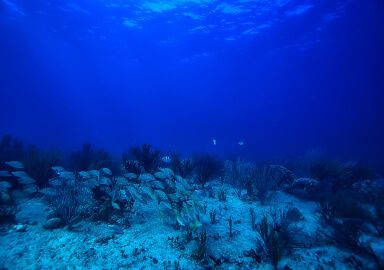Bluefish
The bluefish, also known as tailor in Australia, elf or shad in South Africa, is a medium sized aggressive fish, found in the coastal areas almost all over the world.
View 29 listings
29
listings
–
price starting from
3
countries
Where and When?
Geographically, the only shores where bluefish are not caught are around the northern Pacific Ocean including the western seaboard of USA. In eastern USA they are year round residents in the southern areas, such as the Gulf of Mexico and Florida, while they migrate northwards, sometimes as far north as Nova Scotia, in summer. They are generally a fish of the coastline but also enter estuaries, bays and can travel distances up rivers. Near the shore they can travel large distances in search of food but often take up short term residence in suitable bays or inside headlands. Larger specimens come inshore occasionally but, while the smaller ones are often in large similar sized shoals, larger fish are often alone or in small groups. Occasionally they herd small fish very close to the shore and create a “bluefish blitz” when they churn the water into froth as they seize the fish. Bluefish are an important sport fish species around much of Australia as well as South AfricaSouth Africa.
About Bluefish
The only surviving member of the family Pomatomidae, the bluefish (Pomatomus saltatrix) is a fairly elongate, narrowish fish with a large deeply forked tail fin. It has a big mouth with single rows of razor sharp teeth lining the jaws which, if the fish is handled carelessly, can cause severe, profusely bleeding cuts. Another part of its anatomy that can cause injury to the angler that unhooks it without due care is sharp spines in place of a forward dorsal fin. They are grayish, green or blue above and paler below with a shiny skin and small scales that shed onto hands, clothes and tackle when the fish is being handled. Voracious and aggressive feeders, the bluefish feeds mainly on other fish, but can also take squid and invertebrates. The record length is 1.3 meters (4 ft. 4 in.) with a mass of 14.4 kilograms (31 lbs. 12 oz.) at age 12 years. Most fish caught in the inshore environment are, however, around 30 cm (one ft.) long. They undertake migrations to cooler areas in summer and warmer areas in winter. They are multiple spawners through spring and summer.
How to Catch?
It is often said that when the bluefish want to feed they will take almost any bait but, when they are “off the bite”, you can offer them the most tempting titbit but not elicit any interest. While this is generally true, the species can often suddenly decide to feed or stop feeding for no obvious reason. Bluefish often feed voraciously but can also be very selective about what they take and this can change rapidly. There are, however, general rules and principles that can lead to improved catches. Most bluefish are caught from the shore whether it is from a beach, headland, pier, estuary or lagoon. Most are caught on light tackle using live bait, dead natural bait, plastics or even fly. Larger fish can often be caught from boats using any of these methods but, regardless of where or how they are being caught, very strong or bite resistant terminal tackle is recommended due to the fish’s extremely sharp teeth. Long metal spoons are ideal to keep the teeth near the hook but away from the nylon. Light tackle fly, plastic or lure fishing can give excellent sport, even with small fish.







